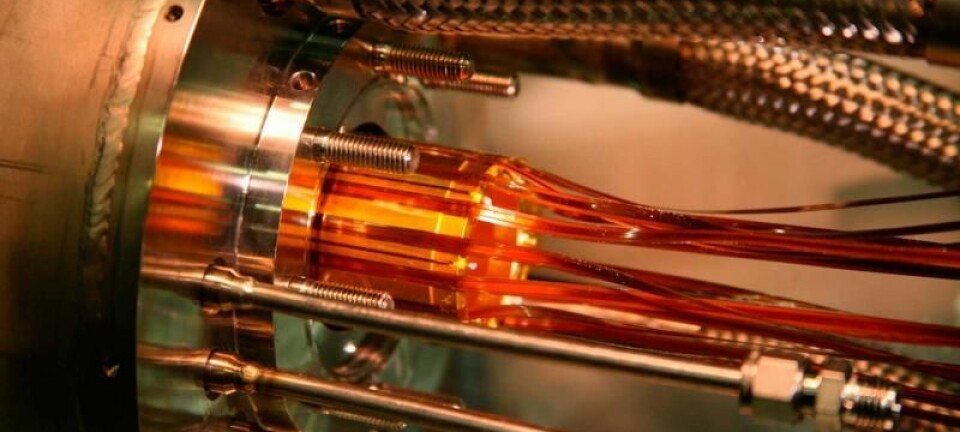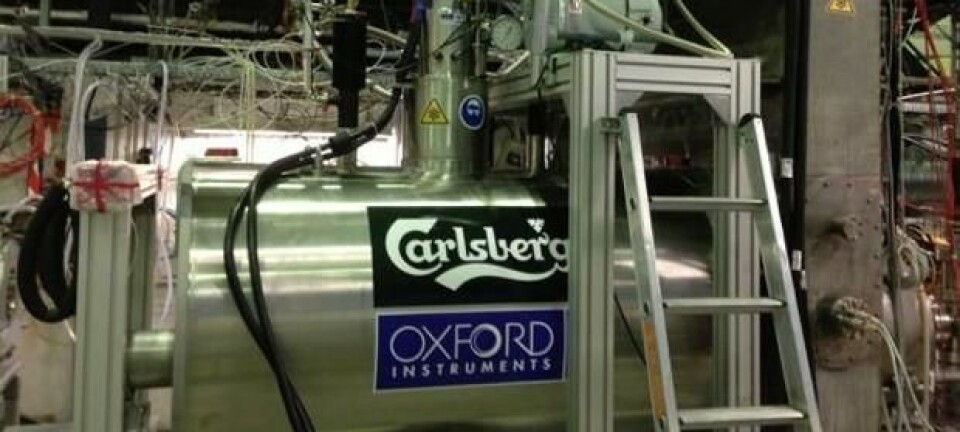Scientists conduct most precise measurements of antihydrogen to date
New results show that matter and antimatter interact with light in precisely the same way.
It is one of the greatest mysteries in the universe: Why is there so much more matter than antimatter?
In the early days of the universe there was probably equal amounts of each, but for some reason or other, today, our universe is dominated by matter.
This asymmetry could have something to do with the fact that matter and antimatter do not behave in exactly the same way—they are not exact mirror opposites of each other.
A research team, led by Professor Jeffrey Hangst from Aarhus University, Denmark, wanted to find out if this was true. With the help of the Alpha-2 experiment at CERN in Switzerland, they were able to hold antihydrogen atoms in a field long enough to measure them.
They carried out extremely precise measurements, demonstrating that hydrogen and antihydrogen behave in exactly the same way when excited with a laser.
The results are published in the journal Nature.
100 times more precise measurements
A regular hydrogen atom consists of a positively charged proton and a negatively charged electron. Antihydrogen meanwhile, consists of a negatively charged antiproton and a positively charged positron—the anti-particle of an electron.
Scientists first succeeded in measuring the difference between the two energy states of antihydrogen in 2016.
Now, they can measure the spectrum of antihydrogen (how it absorbs and emits light) 100 times more precisely than they could just a year and a half ago.
It is quite an achievement as antimatter is not easy to produce, catch, or store. As soon as antimatter meets matter, they disappear in a burst of energy.
Read More: What's the (dark) matter?
25 years of work paid off
Scientists have now discovered that antihydrogen and hydrogen require the same amount of energy to switch states: It takes the same amount of energy to make an electron or a positron take a quantum jump and any difference between the two is absolutely tiny.
They measured this in the hyper-fine structure of the antihydrogen spectrum.
“Back then we only found the spectral line, but now the measurements look just like what we see when we measure hydrogen,” says Hangst, who has been working on this for more than 25 years.
“It’s gone really fast in recent years—better than expected. Sometimes I actually think I might be dreaming,” he says.
Read More: Scientists observe exploding star through extremely rare cosmic phenomenon
Even more precise measurements on the way
“But we’re not there yet. We’re still short of the level of precision with which we can measure hydrogen—by a factor of 500,” says Hangst.
“But we now know that there’s nothing stopping us from getting there. It will just take some years to do,” he says.
For this to happen, they will need to upgrade their equipment. For example, it will require an ultra-precise atomic clock.
Read More: Scientists discover impossible hydrogen bond
Theory needs to be tested
It will be a big surprise if hydrogen and antihydrogen do turn out to be so very different, says Jørgen Beck Hansen, an experimental subatomic physicist from Niels Bohr Institute from the University of Copenhagen, Denmark.
Besides the difference in charge, it would contradict physicists’ best theories of particles and forces.
“If we took the entire universe, swapped matter with antimatter, mirrored it, and allowed time to run backwards, then according to our equations we would get a universe that resembles the one that we live in today,” says Hansen, who was not involved in the new study.
“Until we’ve turned over each stone we don’t know what we will find underneath. We should go as far as we can to see the difference between hydrogen and antihydrogen,” he says.
“We particle physicists measure matter and antimatter to a much greater precision—but Jeff and his team use a completely different method and measure different particles. This gives us an independent measurement, and this is important. It could reveal something we missed with our method,” says Hansen.
----------------
Read more in the Danish version of this article at Videnskab.dk
Translated by: Catherine Jex









